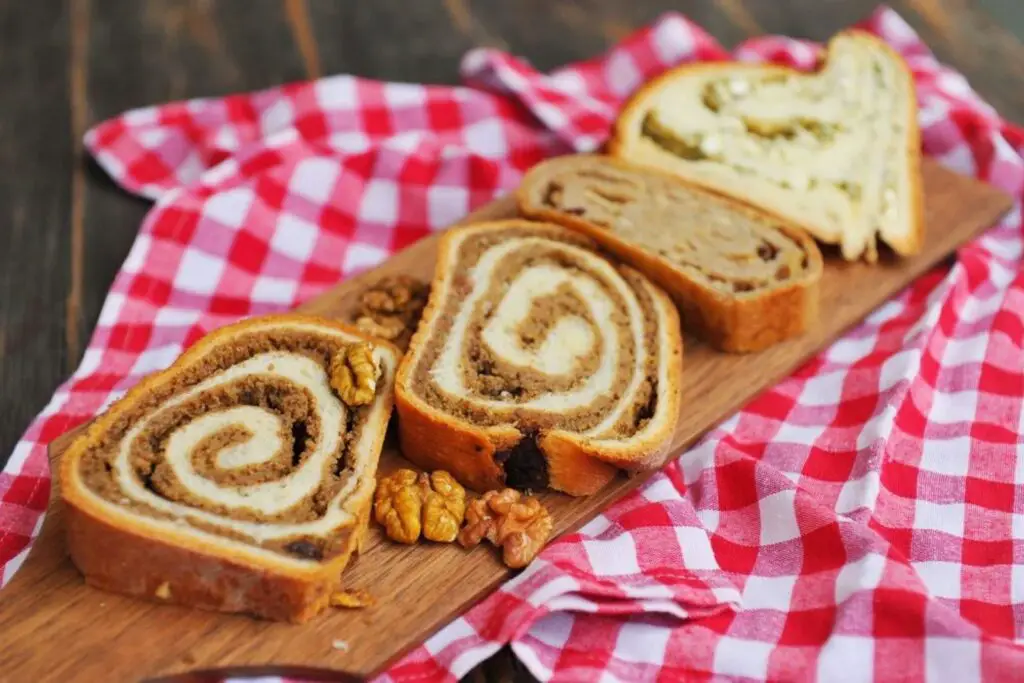
Punjabi samosas are a popular Indian snack known for their crispy pastry exterior and flavorful potato and spice filling. These triangular delights are a staple at many gatherings and celebrations, often served with chutneys or sauces. Whether you’ve made a large batch of Punjabi samosas or want to preserve the ones you bought, freezing them can be a convenient way to ensure they’re available whenever you’re craving this delicious treat. This article offers a step-by-step guide on how to freeze Punjabi samosas while maintaining their taste and texture.
Here’s a comprehensive guide to freezing Punjabi samosas:
Step 1: Prepare the Punjabi samosas
Freezing Punjabi samosas requires some preparation to ensure that they maintain their delicious taste and crispy texture. Here’s why it’s important to follow this step:
- Cooking and Cooling: Before you freeze Punjabi samosas, make sure they are fully cooked. Whether you’ve prepared them at home or bought them, cooking the samosas ensures that the filling is properly heated and safe for consumption. Once they are cooked, allow the samosas to cool down to room temperature. This step is essential because placing hot samosas directly into the freezer can create excess moisture inside the packaging. This moisture can lead to ice crystals forming on the samosas, resulting in a soggy texture when they’re reheated later.
- Preventing Condensation: Allowing the samosas to cool on a wire rack for about 30 minutes after cooking helps to release any excess steam and heat. This step minimizes the risk of condensation forming inside the wrapping or packaging when you freeze them. Condensation is the enemy when it comes to freezing foods, as it can lead to ice buildup and compromise the quality of the samosas. By cooling them down before freezing, you’re reducing the chances of ice crystals forming on the surface, which would otherwise result in a loss of crispness and taste upon reheating.
- Maintaining Texture: Samosas are beloved for their crispy outer shell. By ensuring that they are completely cooled before freezing, you’re preserving their texture. If you were to freeze hot samosas, the steam generated during the freezing process could be trapped inside the packaging. When you later thaw and reheat the samosas, the trapped steam could cause the pastry to become soft and lose its desirable crunch.
Step 2: Arrange the samosas
After your Punjabi samosas have cooled down to room temperature, it’s time to set them up for optimal freezing. Proper arrangement is essential to ensure that your samosas remain separate and intact during the freezing process. Here’s why this step is important:
- Preventing Sticking: When you freeze samosas, there’s a risk that they might stick together if they come into direct contact with each other. If samosas freeze while touching, the moisture on their surfaces can freeze and create a bond between them. This sticking can result in distorted shapes and difficulty in separating them when you want to cook a portion. By arranging the samosas on a baking sheet or tray with enough space between them, you’re preventing this issue from occurring. Each samosa will freeze individually, allowing you to easily take out just the number you need without having to defrost an entire clump.
- Maintaining Shape: Proper spacing also helps the samosas maintain their original shape. If samosas are allowed to touch while freezing, their pastry shells might deform, and the fillings could get squished or displaced. By arranging them with care on a flat surface, you’re ensuring that each samosa retains its characteristic triangular form and delicious filling distribution.
- Even Freezing: Placing the samosas in a single layer on a baking sheet or tray allows for even freezing. Air can circulate around each samosa, ensuring that they freeze uniformly. This helps maintain the overall quality of the samosas and prevents any potential freezer burn that could occur if they were unevenly frozen.
- Ease of Packaging: Another advantage of arranging the samosas on a tray is that they will already be individually frozen when you’re ready to package them. This makes it easier to wrap them without worrying about them sticking together or losing their shape.
Step 3: Flash-freeze
Once your Punjabi samosas are neatly arranged on a baking sheet or tray, it’s time for the initial freezing stage. This step, often referred to as flash-freezing, plays a pivotal role in ensuring that your frozen samosas maintain their individual shapes and don’t become a solid mass. Here’s why this step is an essential part of the freezing process:
- Preventing Clumping: Flash-freezing is a technique that involves subjecting food items to a very low temperature for a short period. By placing the tray of samosas in the freezer for the initial freezing session, you’re essentially giving them a brief exposure to the extremely cold environment. This rapid freezing process prevents the samosas from sticking to each other in the final packaging. If you were to directly place the samosas in a bag or container for freezing without this step, they might clump together due to residual moisture or condensation on their surfaces. Flash-freezing creates a protective barrier of frozen air around each samosa, preserving their individuality.
- Maintaining Texture: Flash-freezing helps maintain the texture of the samosas. When food freezes too slowly, ice crystals can form within its cells, causing cellular damage and affecting the texture when thawed. Rapid freezing reduces the size of ice crystals and minimizes damage to the cellular structure of the samosas. This means that when you reheat them later, they are more likely to retain their original crispy pastry and flavorful filling.
- Uniform Freezing: During the initial freezing, the cold air circulation in the freezer ensures that each samosa freezes evenly. This prevents any potential inconsistencies in texture or flavor that might occur if they were frozen too slowly or in a clumped arrangement.
- Time Frame: Allowing the samosas to freeze for about 1 to 2 hours during the flash-freezing stage strikes a balance between efficient freezing and energy conservation. It’s long enough to solidify the outer layer of the samosas and prevent sticking, but not so long that it causes undue stress on the freezer or excessively freezes the samosas.
Step 4: Package the samosas
With the samosas having undergone the initial flash-freezing process, it’s time to move on to packaging. Proper packaging is crucial for preserving the quality, flavor, and texture of your Punjabi samosas during their time in the freezer. Let’s delve into why this step is essential and how to go about it:
- Maintaining Shape: Individually wrapping each samosa with plastic wrap or aluminum foil serves a dual purpose. Firstly, it helps maintain the distinctive triangular shape of the samosas. The fragile pastry can easily lose its form if exposed to air and moisture in the freezer. By wrapping each samosa separately, you’re ensuring that the pastry maintains its integrity, preventing any flattening or distortion that might occur if they were to shift or press against each other.
- Preventing Freezer Burn: Freezer burn is the result of food being exposed to air and moisture in the freezer for extended periods. This can lead to changes in taste, texture, and overall quality. Individually wrapping each samosa forms a protective barrier that shields them from the cold, dry air in the freezer. This step significantly reduces the chances of freezer burn, ensuring that your samosas remain as flavorful and enjoyable as when you first froze them.
- Option for Convenience: Alternatively, you can opt to place the individually wrapped samosas in a single layer inside a resealable freezer bag. This method has the advantage of allowing you to pack multiple samosas together while still maintaining a protective barrier. Just ensure that they are arranged in a single layer to avoid squishing and to enable easy separation when you need to take out only a few.
- Reduced Clumping: The individual wrapping or single-layer arrangement inside a freezer bag also prevents samosas from sticking to each other. This ensures that you can easily take out the desired number of samosas without needing to thaw the entire batch.
Step 5: Seal and label
As you prepare your Punjabi samosas for their extended stay in the freezer, the sealing and labeling step is vital to maintaining their quality and ensuring a pleasant experience when you eventually enjoy them. Let’s delve into the reasons why this step matters and how to execute it effectively:
- Air Removal for Fresher Food: Squeezing out excess air from the plastic wrap or freezer bag is crucial to prevent freezer burn and maintain the freshness of your samosas. Freezer burn occurs when food is exposed to air, causing dehydration and degradation in taste and texture. By removing excess air, you’re creating a vacuum-like environment within the packaging that significantly reduces the risk of freezer burn. This step is especially important if you’re using a resealable freezer bag to store multiple samosas, as any trapped air can lead to potential moisture buildup and ice crystals forming.
- Preserving Quality: Properly sealed packaging keeps your samosas protected from the cold, dry air in the freezer, which can sap moisture from the food. By sealing the packaging tightly, you’re ensuring that your samosas remain as delicious as the day you froze them. This attention to detail prevents the texture of the pastry and the flavors of the filling from deteriorating over time.
- Labeling for Tracking: Don’t underestimate the power of labeling. By marking the package with the date on which you froze the samosas, you’re creating a reference point for their freshness. Frozen food is best consumed within a certain timeframe to ensure peak quality, and labeling helps you manage your inventory effectively. This way, you can prioritize consuming the older samosas first and avoid keeping them frozen beyond their optimal consumption window.
- Organization and Convenience: Labeling also adds an element of organization to your freezer. Instead of having to guess the age of your frozen samosas, you’ll have a clear indication of when they were stored. This practice can help you plan your meals and snacks more efficiently, especially when you have other frozen items to manage.
Step 6: Store in the freezer
Now that your Punjabi samosas are meticulously wrapped, sealed, and labeled, it’s time to find them a cozy spot in your freezer. Where and how you store them within the freezer can make a significant difference in maintaining their quality and appearance. Here’s why this step is crucial and how to execute it effectively:
- Optimal Freezing Temperature: The coldest part of your freezer is typically the back and bottom sections. These areas experience the least temperature fluctuation when the freezer door is opened, ensuring a more consistent and ideal freezing environment. Placing the wrapped and sealed samosas here helps maintain a steady freezing temperature, which is essential for preventing the formation of large ice crystals that can negatively impact texture and flavor.
- Preventing Filling Shift: Storing your samosas upright, rather than laying them flat, is essential to prevent the filling from shifting. Samosas have a delicious potato and spice filling, and if they’re not stored upright, the filling can move and settle, potentially causing misshapen samosas. By keeping them upright, you’re ensuring that the filling remains evenly distributed within the pastry shell, maintaining the desired taste and appearance.
- Efficient Use of Space: Storing your samosas upright not only helps with maintaining their shape but also makes efficient use of the available freezer space. When stored upright, they take up less horizontal space, allowing you to utilize the freezer’s capacity more effectively.
- Ease of Retrieval: Placing the samosas in an organized manner also makes it easier to retrieve them when you’re ready to cook or reheat. You won’t have to dig through a heap of frozen items to find the samosas you’re craving.
- Uniform Airflow: Storing your samosas with space between them allows for better airflow around each one. This facilitates even freezing and prevents any potential sticking that might occur if they were stored too close together.
How long can I keep frozen Punjabi samosas?
For optimal quality, you can keep frozen Punjabi samosas for about 2 to 3 months. Beyond this time, the texture and flavor may start to deteriorate. Proper packaging, labeling with the freezing date, and adherence to freezing guidelines can help you manage their storage effectively.
What’s the ideal temperature for freezing Punjabi samosas?
The ideal temperature for freezing Punjabi samosas is 0°F (-18°C) or lower. This temperature ensures that the samosas are frozen quickly and effectively, preserving their quality and taste during storage.
Other related questions
How do I defrost Punjabi samosas?
To defrost Punjabi samosas, transfer them from the freezer to a plate and leave them in the refrigerator for a few hours or overnight. Alternatively, reheat directly from frozen in an oven at 350°F (175°C) for 15-20 minutes until warmed through. Avoid using a microwave to preserve their crispiness.
Can I refreeze Punjabi samosas?
Yes, refreezing Punjabi samosas is possible but not ideal. Repeated thawing and refreezing can affect their quality, causing texture and flavor changes. It’s best to consume them after the initial thawing to preserve their taste and texture.
How do I know if the Punjabi samosas have gone bad after being frozen?
Inspect frozen Punjabi samosas for signs of freezer burn, like dry, discolored patches. Off-putting odors, changes in texture, or sogginess may indicate spoilage. If unsure, discard to avoid consumption of compromised food.
Can I freeze store-bought Punjabi samosas?
Yes, you can definitely freeze store-bought Punjabi samosas. Follow the same freezing process as you would for homemade samosas to maintain their taste and texture. Make sure to wrap and seal them properly before freezing, and consider labeling them for easy identification.
Can I freeze Punjabi samosas with various fillings?
Absolutely, you can freeze Punjabi samosas with a variety of fillings. Whether you’re making vegetarian, meat, or other creative fillings, the freezing process remains the same. Ensure they’re fully cooked and cooled before wrapping and freezing to preserve their taste and texture.
Can I freeze Punjabi samosas with dipping sauces?
It’s not recommended to freeze Punjabi samosas with dipping sauces. Freezing can alter the texture and consistency of sauces, leading to undesirable changes when thawed. It’s better to freeze the samosas without the sauces and add the sauces after reheating for the best results.








